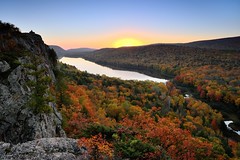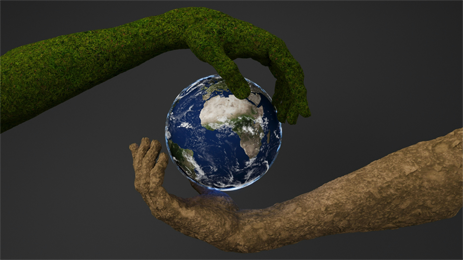
04/22/2025
To celebrate Earth Day this year the Green Reps wrote articles about different sustainability topics on SUNY Cortland campus.
What impact does artificial intelligence have on our environment?
By Brianne Leak
The Environmental Ultimatum
Most of us are very familiar with the rise of artificial intelligence. Some may even have used it a few times. It comes in handy and appears to make our lives easier. There are countless pros, such as speeding up tedious tasks, its 24/7 availability, efficiency, accuracy, and much
more. Unfortunately, all of these benefits come at a price, one that absolutely no amount of benefits can outweigh. The cost is our planet.
The Rise 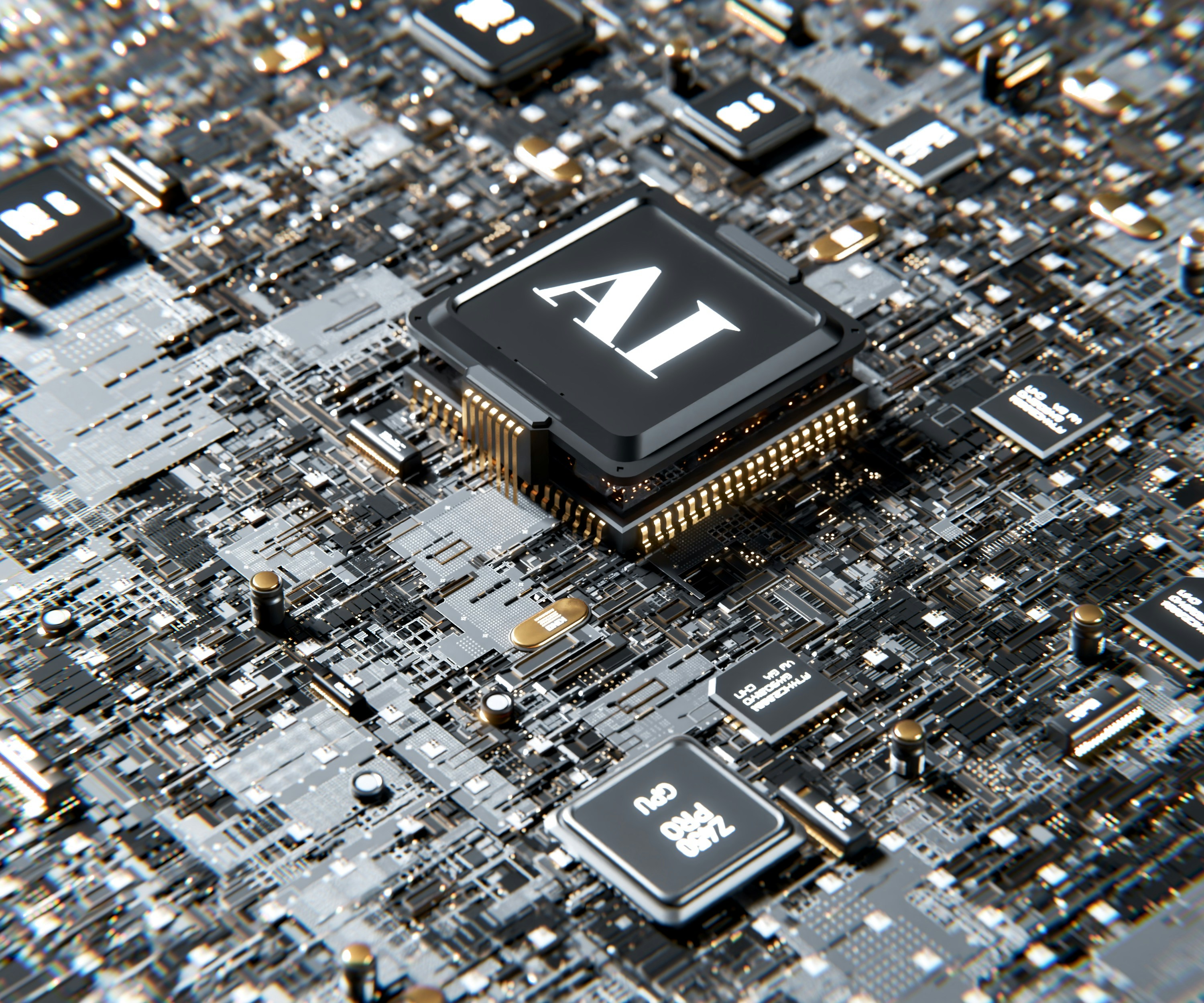
Artificial intelligence is not an incredibly new find. It has been around for decades; however, the extent of its ability has increased over the years leading to even more usage than before. With easier access than ever, various tools at our fingertips, and the increase in advancements ranging from healthcare to engineering through the power of artificial intelligence. More people are inclined to use it. The use of generative artificial intelligence has increased from 33% in 2023 to 71% in 2024according to a report from McKinsey & Company. This 38% increase came with a large cost.
How are AI and the environment connected?
Artificial intelligence requires extreme amounts of energy, electricity, and power. What does this mean for the environment? Carbon dioxide and methane are produced and released as a result. Carbon dioxide and methane are greenhouse gasses, which are linked to the increase in global warming and climate change. In addition to the excessive greenhouse gas emissions, the process of producing artificial intelligence technology also requires large amounts of water. AP News reports, that researchers have found that popular AI search engines use 16 ounces of water for every 5 to 50 prompts. The amount of water used per search depends on the software and model of the search engine. While 16 ounces of water does not sound like a lot, the number adds up because we are almost constantly using artificial intelligence, whether it be through search, home appliances, GPS directions, or smartphone use.
What you can do to help
There is no denying the fact that artificial intelligence comes with plenty of benefits. It can even be used to help reverse some of our current environmental damages. This can only happen if and when it is used properly. The reliance on artificial intelligence has increased over the
years. Cutting back on unnecessary use of artificial intelligence such as chat boxes for generating emails is a good start. As well as transitioning to AI technology fueled by renewable energy such as solar power or wind power
 Single-use plastics and their impact on the world
Single-use plastics and their impact on the world
By Kat Wilburn
Colleges across the country are stepping up their efforts to protect the environment and cutting down on single-use plastics as a key focus. Single-use plastics, like bags, bottles, and utensils, are made to be used once and then thrown away. Unfortunately, they can take hundreds of years to break down in the environment. Each year, over 400 million tons of plastic are produced worldwide, but only about 10% of it gets recycled. The rest often pollutes our land and water, harms wildlife, and even poses health risks to people, reports CU Boulder.
The State University of New York (SUNY) system is leading the way in tackling this problem. In 2024, SUNY system announced a plan to phase out single-use plastics on all its campuses. This includes items like plastic bags and food containers, which will be replaced with reusable or eco-friendly alternatives. Several SUNY campuses, such as SUNY ESF and SUNY New Paltz, have already made big changes to reduce plastic waste.
This effort is part of a larger global movement to reduce plastic pollution. For example, in 2024, 175 countries agreed to create an international plan to address this issue. Campuses like CU Boulder are also replacing single-use plastics in vending machines with more sustainable options like aluminum cans.
Reducing single-use plastics is an important step toward a cleaner and healthier planet. By using reusable items and supporting policies like SUNY’s phase-out plan, we can all make a difference. Small changes add up to big impacts!
AI has a drinking problem 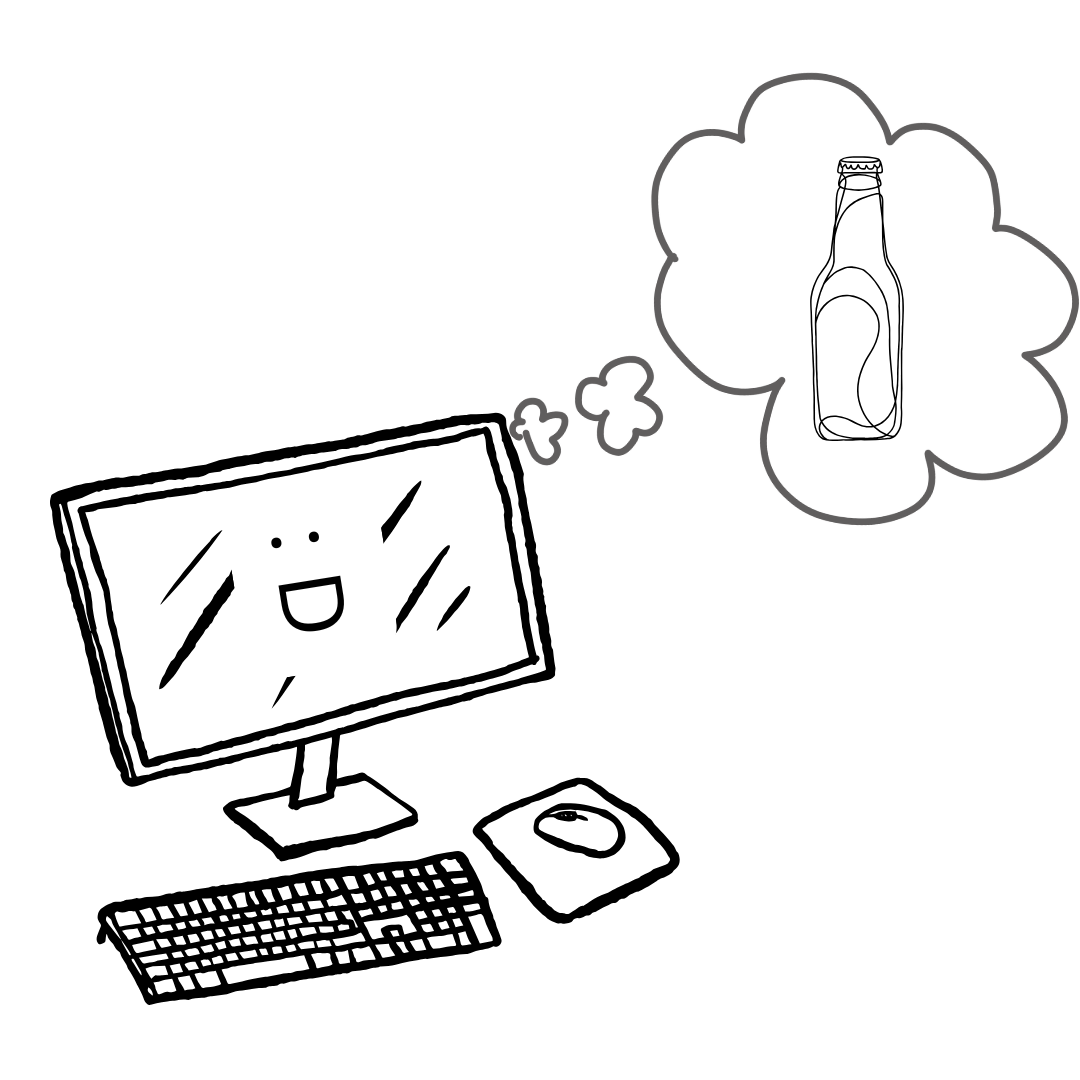
By Fiona Joss
In recent years, everyday use of artificial intelligence (AI) has surged. The release of OpenAI’s “Chat GPT” in 2022 seemingly spurred a trend among search engine companies to adapt their versions of the technology. Now, users find it in every corner of the internet in the form of an AI overview, AI-generated images, or videos voiced or entirely made by AI. While AI chats and assistants stir concern in many industries, something else is at risk: water (Pinheiro Privette, 2024).
Increased use of AI has created a need for more large-scale data centers. Currently, there are roughly 11,000 data centers globally, with over 5,000 of them located in the United States (Minnix, 2025). These data centers rely heavily on water for energy, cooling, and the manufacturing process. For example, for every kWh of electricity used, 2.0 gal of water is evaporated per “the national weighted average for thermoelectric and hydroelectric water use” (f). In context, 7.4 million kWh of electricity were used to fuel data centers alone in 2023, which means approximately 14.8 million gallons of water were consumed by data centers. Less than 1% of Earth's water is accessible for human use and consumption, but data centers fueling AI guzzle this already scarce resource with each prompt. AI is the future of tech, but water is life; without water, there is no future.
References
- Li, P., Yang, J., Islam, M. A., & Ren, S. (2025). Making AI Less “Thirsty”: Uncovering and Addressing the Secret Water Footprint of AI Models.
- Minnix, J. (2025). 130 data center stats (April-2025).
- Pinheiro Privette, A. (2024). Ai’s challenging Waters.
What is Arbor Day? 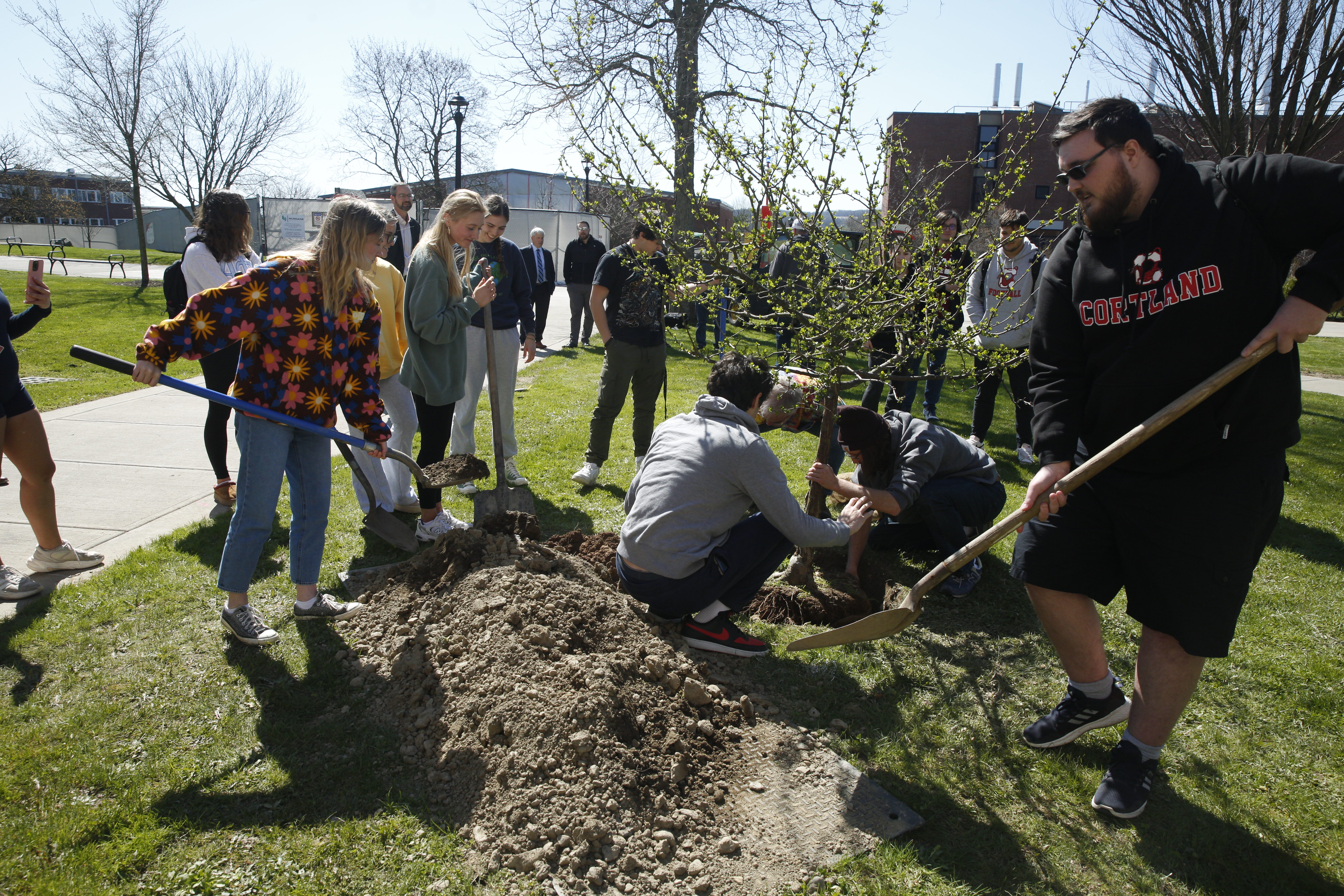
By Chris Murphy
Arbor Day is just around the corner on April 25th, and you will see the Green Reps and other environmental awareness efforts around campus. But what is it? And why should you care? Arbor Day, put simply, is a day to plant trees and think about the earth. Arbor was the Latin word for tree, so the name literally means tree day!
What do people do to celebrate Arbor Day? People plant trees, and lots of them. It's hard to count exactly how many trees get planted each year, some countries celebrate Arbor Day on different dates, and some people plant a tree on their land outside of organized plantings. We do some statistics, like the Arbor Day Foundation has helped to plant more than 500 million trees since 1972! During the first ever Arbor Day in 1872 more than 1 million trees were planted, according to One Tree Planted!
Did all this tree talk sprout your interest? You can volunteer to help the Cortland community by participating in Make a Difference Day or you can donate to a charity that plants trees or maintains forests, like the Arbor Day Foundation. If you can't donate or plant trees that's ok too! Tell others about Arbor Day, take time to learn about the environment and your local area's needs, and think about the ways you can help out.
Protecting the Porkies
By Mario Ruggiero
The Porcupine Mountains: 60,000 acres of old-growth forest, roaring waterfalls, Lake Superior shoreline, rivers, trails, and ridges- Michigan's largest state park. As beautiful as the park is, it is currently in danger of being the home of the Copperwood Mine. The idea was proposed by Highland Copper, a Canadian company, that plans to develop the Copperwood Mine adjacent to and beneath the park. The proposed site is alarmingly close to Lake Superior, with mining activities projected to occur within 100 feet of the shoreline. This proximity raises environmental concerns, particularly regarding storing over 30 million tons of mine waste on downward-sloping terrain leading directly to the lake.
Environmentally speaking, the construction and operation of the mine would cause habitat fragmentation, water contamination, and pollution from noise and light. Economically, given that outdoor recreation contributes over $12 billion annually to Michigan's economy, compared to the $1 billion from mining, the economic implications are substantial and not worth it.
To combat these measures, local residents started the movement Protect the Porkies in June 2023. The movement has garnered widespread support from environmental groups, outdoor enthusiasts, and concerned citizens. Protect the Porkies has mobilized over 460,000 petition signers, urging elected officials to reject a $50 million taxpayer-funded grant for the mine's development.
The movement highlights that the Porcupine Mountains and Lake Superior are environmental treasures belonging to all, advocating for their protection against short-term industry and money that would not be returned. Through petitions, public awareness campaigns, and community engagement, Protect the Porkies strives to ensure that these natural landscapes remain unspoiled for future generations. How can you help? You can visit www.protecttheporkies.com and sign the petition!
References:
Pure Michigan - Porcupine Mountains Wilderness State Park
My North - The Fight to Protect Michigan’s Porcupine Mountains
Photo credit and license: ![]() All rights reserved by Michigan Nut
All rights reserved by Michigan Nut
© Copyright 2012 John McCormick , All Rights Reserved
Recycling on campus 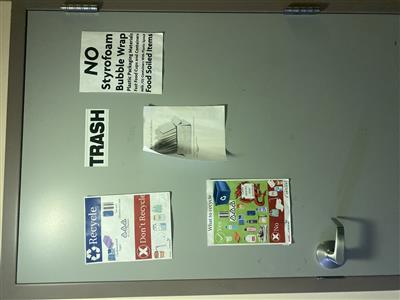
By Daniella Santagata
Most students do not recycle as often as they should. With thousands of recyclable items ending up in the trash daily our campus is being wasteful when it doesn’t have to be. Recycling is one of the easiest ways to help the environment, yet many students overlook it. Let’s change that!
What to recycle?
All items should be clean and dry with no lids or tops. Cortland county accepts type 1,2 and 5 plastics (can be found on back or bottom of item), paper/cardboard, tins/cans and bottles.
What NOT to recycle?
Please do not recycle these items on campus; glass, soiled items, Paper milk/ juice containers with plastic spouts, Styrofoam or bubble wrap and plastic packaging.
Where to recycle on campus?
Every dorm room has a small recycling bin, students can empty their bin into the larger recycling bins that are located in the trash rooms on each floor of their residence hall. In addition, many classrooms contain a small recycling bin, usually found next to the trash bin. The dining facilities on campus also typically have recycling bins as well.
Why is it important?
Recycling helps the environment by minimizing waste in landfills, conserving natural resources, prevents pollution and reducing the use of greenhouse gases. It also helps the economy by boosting economic security by using local materials and by saving energy.
How can we make it easier?
After talking to my friends/peers on campus I have come to the consensus that most people do want to recycle but they find it confusing/difficult. If you have any suggestions on how we can make it easier for you please feel free to reach out!
Reduce, reuse, recycle
Every action big or small makes a difference. By recycling on campus, you're helping to reduce waste, conserve resources, and protect our environment.
If you have any more questions, check out the SUNY Cortland Recycling page.
